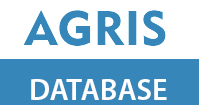
Mapping of LC/LU changes inside the Aghdam district of the Karabakh omics region applying object-based satellite image analysis A.A. Rasouli, M.M. Asgarova, S.H. Safarov
Research article: Mapping of LC/LU changes inside the Aghdam district of the Karabakh omics region applying object-based satellite image analysis.
Author (s): A.A. Rasouli1, M.M. Asgarova2*, S.H. Safarov3.
Journal of Life Sciences & Biomedicine, vol. 3(76), No 2, p. 54-69 (2021
http://dx.doi.org/10.29228/jlsb.22
1Department of Environmental Sciences, Macquarie University, 12 Wally's Walk, North Ryde, Sydney, Australia
2Faculty of History and Geography, Azerbaijan State Pedagogical University, 104 Hasan Aliyev Str., Baku AZ1072, Azerbaijan
3Institute of Geography, Azerbaijan National Academy of Sciences, 115 H. Javid Ave., Baku AZ1143, Azerbaijan
*For correspondence: matanat_askerova@mail.ru
Received: September 29, 2021; Received in revised form: October 07, 2021; Accepted: October 09, 2021
Identification of the environmental consequences of the 30-year occupation of Karabakh and its adjacent territories by the Armenian armed formations is an important and urgent research task. Object-Based Image Analysis (OBIA) procedures were accordingly applied to examine the condition and changes in landcover and landuse (LC/LU) in the territories of Karabakh liberated from Armenian occupation within the Aghdam District. Firstly, Dynamic Thresholds Indexing (DTI) algorithms were operated to display the main LC by developing several spectral NDWI, NDVI, NBRI, and AVBI indices. At the next step, to recognize precise LU changes inside the study area, a rule-based Nearest Neighbour Classify (NNC) was considered by accompanying an advanced supervised classification technique within the Trimble eCognition setting (eCognition Developer, 2019). DTI results indicated that from 2016 to 2021 inside the Aghdam District, LC changes are quite meaningful. A significant decrease in vegetated cover (10.2 %), increases in the non-vegetated area (11.8 %), and the most noticeable changes are observed in vulnerable lands of about 45.1 km2 (26.8 %). Subsequently, the rule-based NNC method approved various negative LU changes inside the study area that had occurred predominantly to the mixed forest-pasture classes (9.8 %). Besides, the areas of degraded lands have increased by 35 % and barren lands by 4.4 % according to the study. It should be noted that water and agricultural LU demonstrate the least changes overall of 3.4 % and 0.3 %, respectively. The overall accuracy of 0.95 and Kappa statistics of 0.93 confirmed the significant changes in the final LC/LU productions. Consequently, accurate image processing and mapping of the current situation of the liberated regions of Azerbaijan have to be the most urgent tasks of the geographers, ecosystem scientists, and remote sensing specialists prior to the start of reconstruction and rehabilitation projects by government officials and decision-makers.
Keywords: Aghdam district, Karabakh region, LC/LU changes, sentinel-2 imagery, OBIA-based dynamic and threshold indexing, NNC supervised classification
REFERENCES
Aliyev I. (2021) President of Republic of Azerbaijan, 2021. Administrative-territorial units, Office of the President of the Republic of Azerbaijan Presidential Library.
Baatz M., Schape A. (2000) Multi-resolution segmentation – an optimization approach for high quality multi-scale segmentation. In: J.Strobl et al. (eds.), Angewandte Geographische Informations verarbeitung XII, Beiträgezum AGIT Symposium. Salsburg, Karlruhe, Herbert Wichmann Verlag, p.12-23.
Baumann M., Volker C., Radeloff V., Avedian T. (2013) Land-use change in the Caucasus during and after the Nagorno-Karabakh conflict. Reg. Environ Change, 15:170.
Blaschke T. (2010) Object-based image analysis for remote sensing. ISPRS International Journal of Photogrammetry and Remote Sensing, 65(1), 2-16.
Conflict and Environment Observatory (2021) Report: Investigating the environmental dimensions of the 2020 Nagorno-Karabakh conflict Published: February 2021; Categories: Publications, Law and Policy.Copernicus Sentinel-2 (2020) Satellite Missions – eoPortal Directory. Directory.eoportal.org. Retrieved 5 March.
Dozier J. (1989) Spectral signature of Alpine snow cover from LANDSAT Thematic Mapper. Remote Sensing of Environment, 45: 9-22.
eCognition Reference Book (2019) eCognition Developer for Windows operating system, Version 9.5.1, Trimble. Munich, Germany.
eCognition Developer Software 10.1 (2021) Trimble Germany GmbH, Munich, Germany.
FAOSTAT (2014) Statistical database of the Food and Agricultural Organization. Available at: http://faostat.fao.org/.
Foody G.M. (2002) Status of land cover classification accuracy assessment. Remote Sensing of Environment, 80(1): 185-201.
Franklin S.E., Wulder M.A. (2002) Remote sensing methods in medium spatial resolution satellite data land cover classification of large areas. Progress in Physical Geography, 26, 173−205.
General Assembly Security Council (2009) Letter dated 30 September 2009 from the Permanent Representative of Azerbaijan to the United Nations addressed to the Secretary-General, Protracted conflicts in the GUAM area and their implications for international peace, security, and development. The situation in the occupied territories of Azerbaijan Security Council Sixty-fourth year.
Gibbs H.K., Salmon J.M. (2015) Mapping the world's degraded lands. Applied Geography, 57: 12-21.
Hasanov Z.M., Ibrahimov Z.A., NabiyevV.R. (2017) "Beech forests of Azerbaijan: The modern condition, age structure and regeneration. Annals of Agrarian Science, 15(4): 453–457; 1512-1887.
Hay G.J., Castilla G. (2006) Object-based Image Analysis, Strengths, weaknesses, opportunities, and threats (SWOTs). From OBIA 2006. International Archives of Photogrammetry, Remote sensing, and Spatial Information Sciences.
Ikokou G., Smit J. (2013) A technique for optimal selection of segmentation scale parameters for object-oriented classification of urban scenes. South Afr. J. Geomatica, 2 (4):
International Displacement Monitoring Centre (IDMC) (2021) Nagorno-Karabakh conflict: finding common ground in respect of the dead, News and Press Release ICRC.
Kamusoko C. (2019) Remote Sensing Image Classification (Springer Geography) 1st ed., Publisher: Springer.
Kato L. (2020) Integrating Open-street map dаta: in Object-Based Land-Cover and Land-Use Classification for Disaster Recovery, Publisher: LAP LAMBERT Academic Publishing, 76 p.
Khandelwal P., Singh K., Mehrotra A. (2014a) Unsupervised Change Detection from Satellite Images Using KCN, LAP LAMBERT Academic Publishing.
Khatami R., Mountrakis G., Stehman S.V. (2016) A meta-analysis of remote sensing research on supervised pixel-based land cover image classification processes: general guidelines for practitioners and future research. Remote Sens. Environ., 177: 89–100.
Kust G., Andreeva O., Cowie A. (2017) Land Degradation Neutrality: Concept development, practical applications and assessment. Journal of Environmental Management, 195: 16-24.
Lillesand T., Kiefer R., Chipman J. (2004) Remote Sensing and Image Interpretation. 5th ed. John Wiley and Sons Inc, New Jersey.
Lobo A., Chick O.A., Casterad A. (1996) Classification of Mediterranean crops with multisensory dаta: Per-pixel versus per-object statistics and image segmentation, Int. Journal of Remote Sensing, 17 (12): 2385-2400.
Nelson S., Khorram S. (2018) Image Processing and Data Analysis with ERDAS IMAGINE. 1st ed., Kindle Edition, CRC Press.
Pettorelli, N. (2013) The Normalized Difference Vegetation Index, 1st Edition, Kindle Edition, OUP Oxford.
Rasouli A.A., Mammadov R., Pishnamaz M., Hushmand A., Safarov E. (2018b) Assessment of Forest Cover Changes by Applying Object-Oriented Procedures inside the Karabakh Occupied Region. Eurasian GIS 2019 Congress 04-07 September 2018. Baku, Azerbaijan.
Rasouli A.A., Mammadov R., Safarov E., Mohammadzadeh K. (2018c) Fuzzy Object-Based Landcover/Use Mapping of The Karabagh Region by Processing of Sentinel Satellite Imageries. Eurasian GIS 2019 Congress 04-07 September 2018. Baku, Azerbaijan.
Rasouli A.A., Mammadov R. (2020a) Preliminary Satellite Image Analysis Inside the ArcGIS Setting, Lambert Academy Publishing, Germany.
Rasouli A.A., Mammadov G.SH., AsgarovaM.M. (2021a) Mastering Spatial Data Analysis Inside the GIS Setting, Azerbaijan State Pedagogical University. Faculty of History and Geography, Baku.
Rasouli A.A., Mammadov R., Asgarova M.M. (2021b) Application of Satellite Image Processing Methods in Mapping of Landcover/Landuse Changes inside the Karabakh Liberated Territories. Azerbaijan National Academy of Sciences, Department of Biological and Medical Sciences of ANAS Conference.
Rehman S., Hussain M. (2018) Fuzzy C-means algorithm-based satellite image segmentation. Indonesian Journal of Electrical Engineering and Computer Science, 9(2): 332–334.
Sayilan M.O. (2007) 1988–95 Intermediate Nagorno Karabakh Problem , Karabakh conflict between 1988–1995. Master Project, Ankara University.
Scheffer M. (2010) Foreseeing tipping points. Nature, 467: 411–412.
Sentinel Online (2018) Multispectral Instrument (MSI) Overview, European Space Agency. Retrieved 3 December 2018.
Sentinel-2 MSI User Guides (2020) Radiometric Resolutions Sentinel-2 MSI (2020) Sentinel Online. Sentinel.esa.int. Retrieved 5 March 2020.
Simone W.D., Musciano M.D., Cecco W.D., Ferella G., Frattaroli A.R. (2020) The potentiality of Sentinel-2 to assess the effect of fire events on Mediterranean mountain vegetation. Plant Sociology, 57: 11-22.
Szantoi Z., Strobl P. (2019) Copernicus Sentinel-2 Calibration and Validation, European Journal of Remote Sensing, 52, Issue 1.
Thenkabail P.S., Lyon J.G., Huete A. (2018) Fundamentals, Sensor Systems, Spectral Libraries, and Data Mining for Vegetation (Hyperspectral Remote Sensing of Vegetation). 2nd ed., CRC Press.
Valigholizadeh A., Karimi M. (2016) Geographical explanation of the factors disputed in the Karabakh geopolitical crisis, Journal of Eurasian Studies, 7: 172–180.























